 ™
™
TRADITIONAL MOUNTAINEERING
™
www.TraditionalMountaineering.org
™ and also
www.AlpineMountaineering.org
™
 ™
™
FREE BASIC TO ADVANCED ALPINE MOUNTAIN CLIMBING INSTRUCTION
™
Home
| Information
| Photos
| Calendar
| News
| Seminars
| Experiences
| Questions
| Updates
| Books
| Conditions
| Links
| Search
![]()
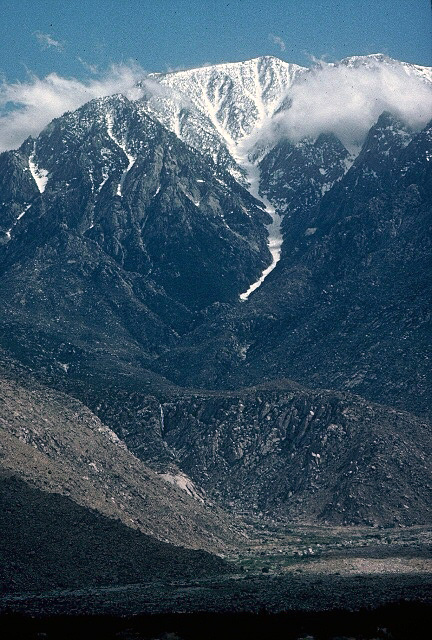
The climb starts at about 800 feet above sea level and tops out at almost 11,000
feet!
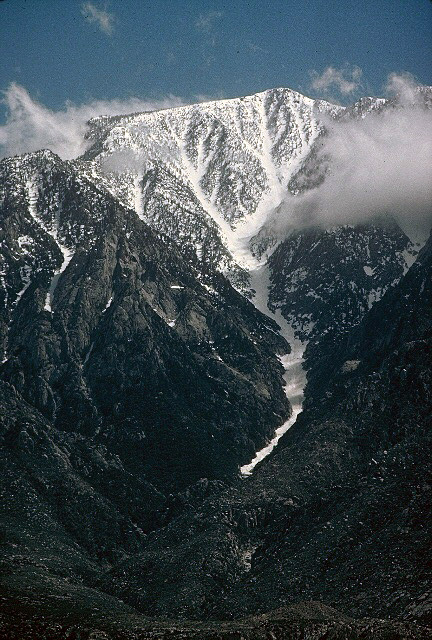
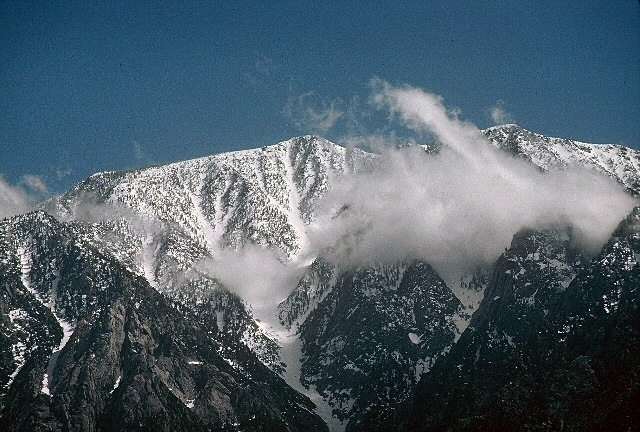
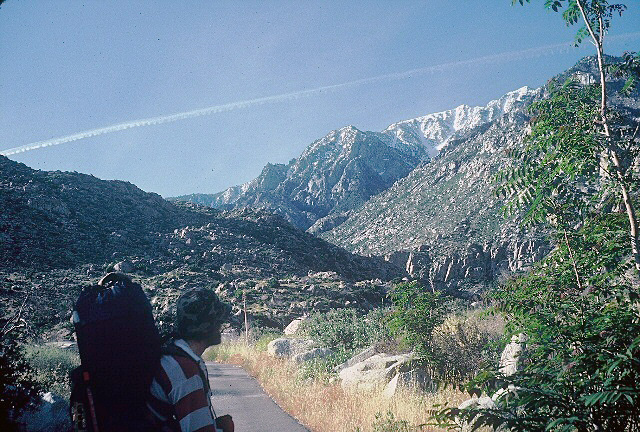
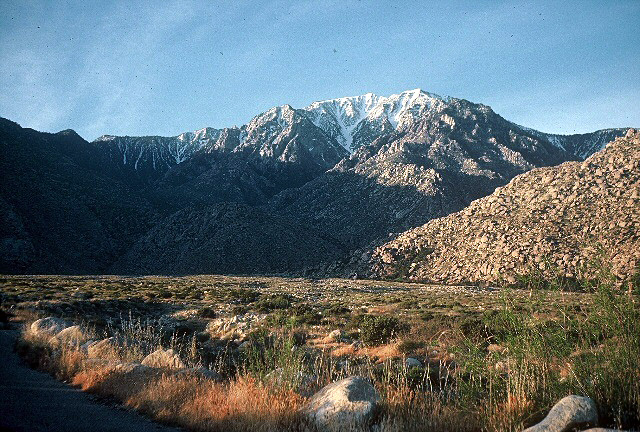
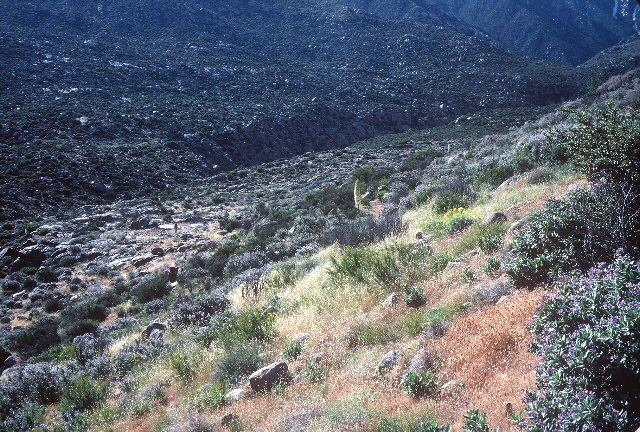
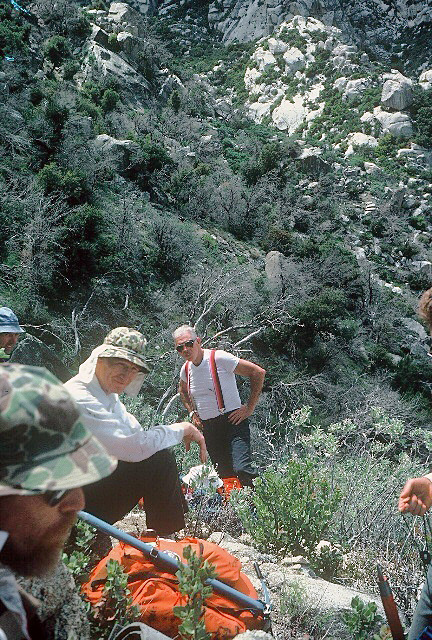
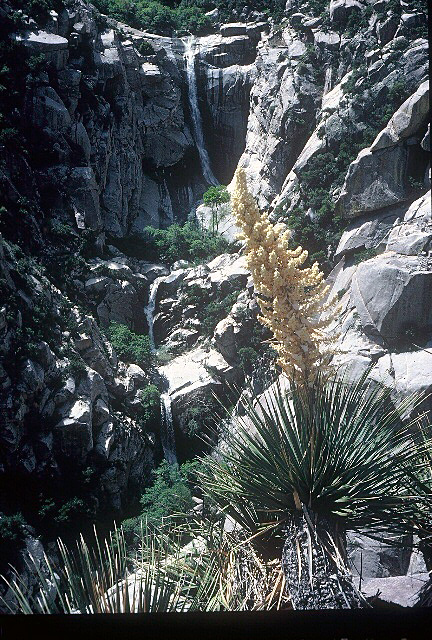
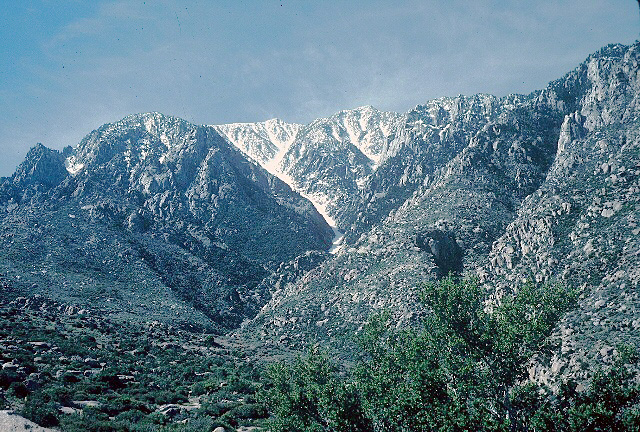
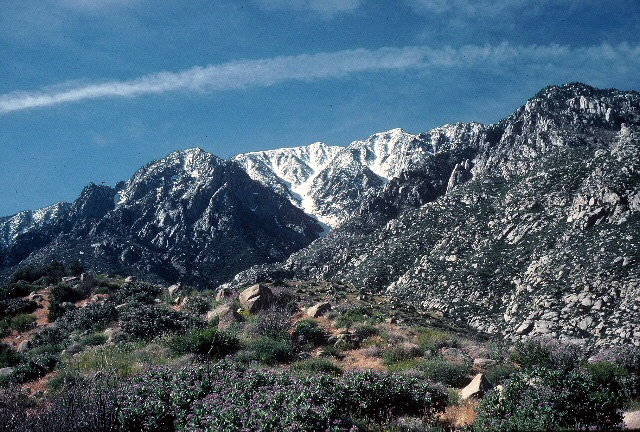
I recall that we saw 30 or so rattle snakes in one area as we made our way up through the
desert.
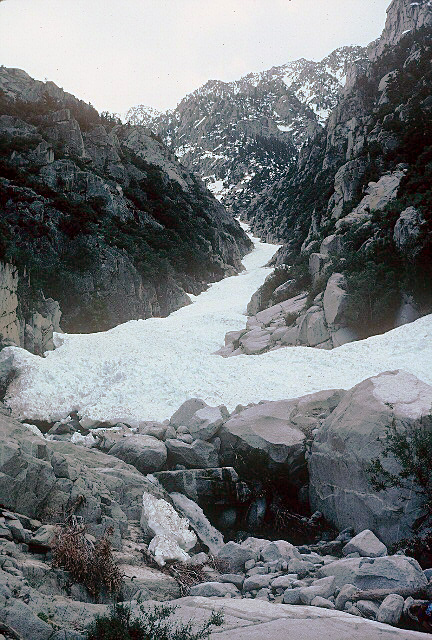
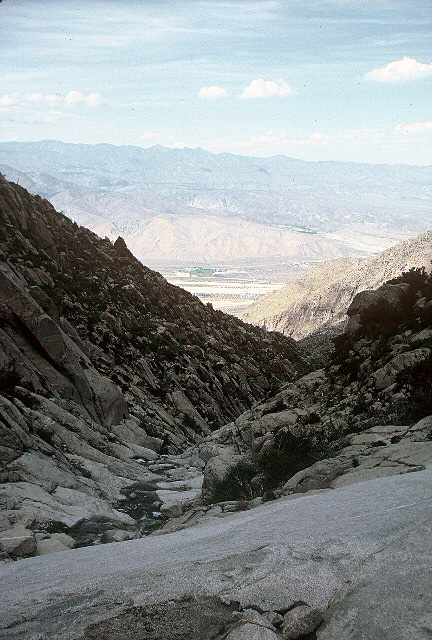
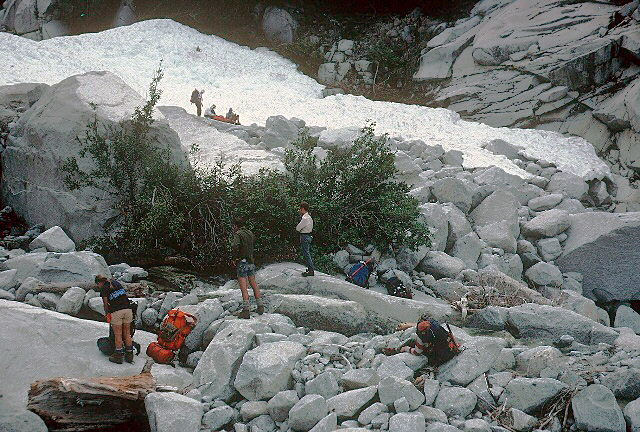
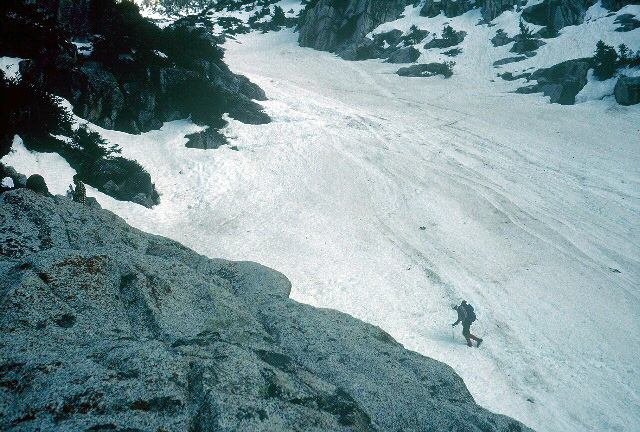
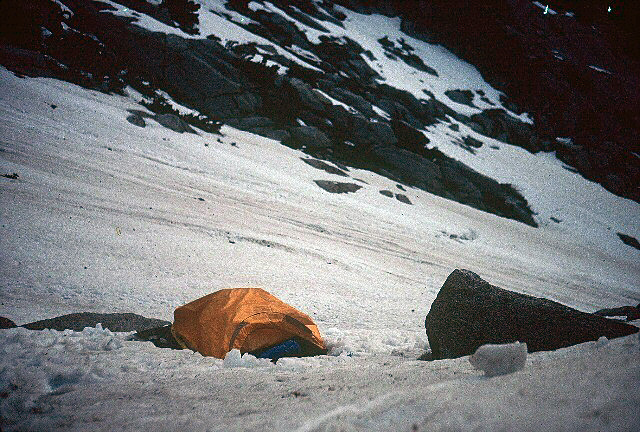
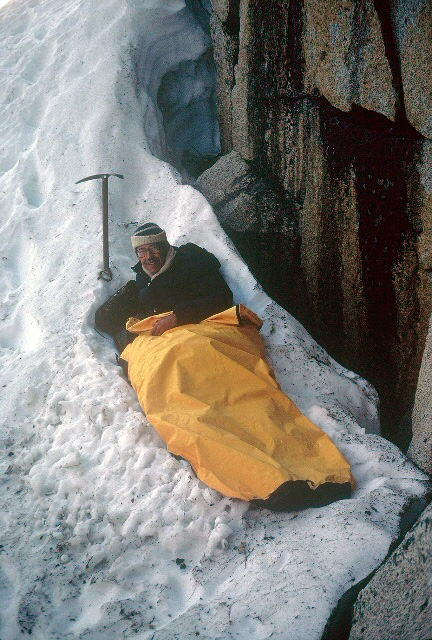
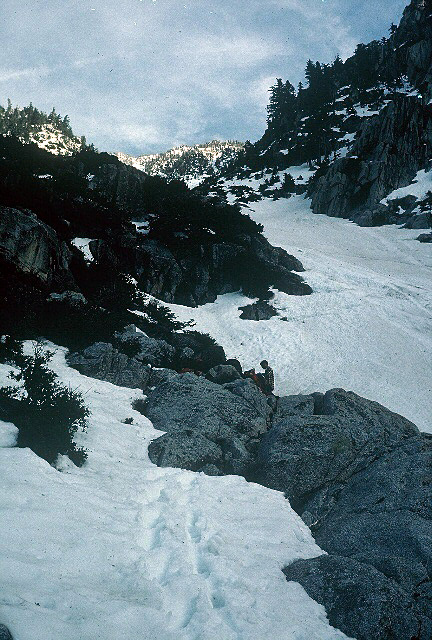
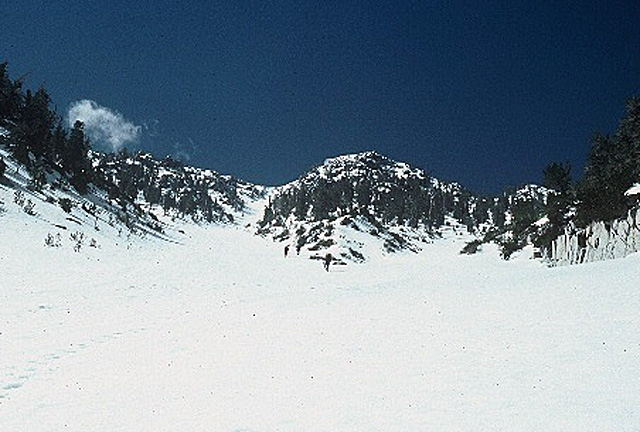
Remember, photos taken up-hill do not show how steep it really is!
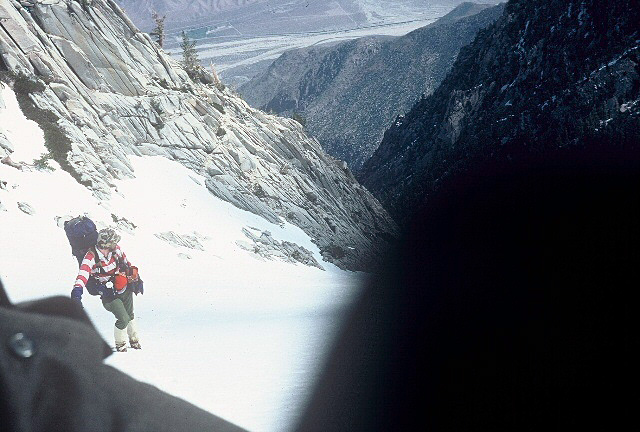
In those days, you had to get your 35 mm camera out of your pack to snap a
picture. Not my best shot, but you get the picture!
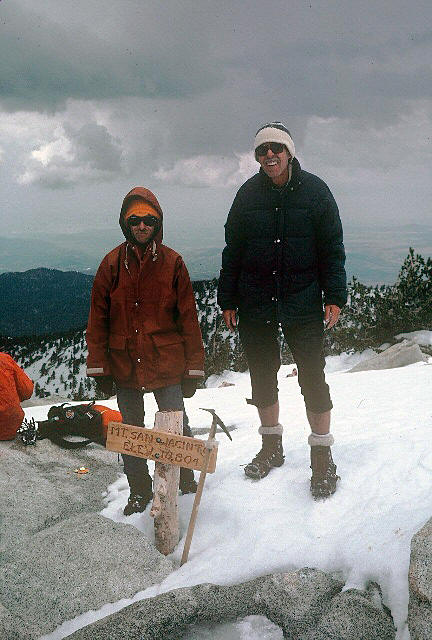
Steve Schuster and Bob Speik
Summit of Mt. San Jacinto 10,804', Southern California, May 1974
via the Snow Creek route, a 10,000 foot desert to summit classic snow climb
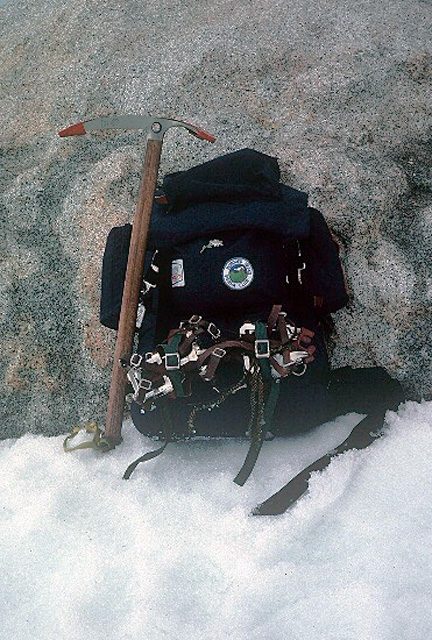
This is my light and fast overnight snow bivy pack ca 1974. I still have the
beautiful wood Camp ice axe, made in Italy.
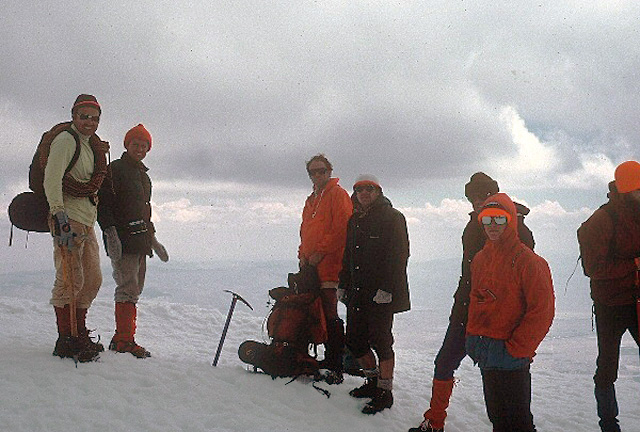
Our group of Sierra Club Leaders.
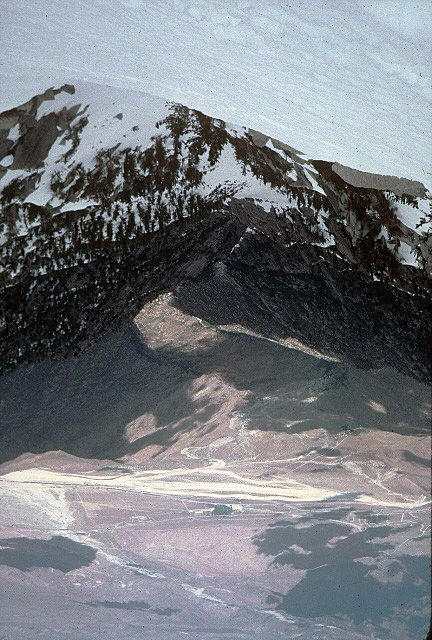
The telephoto view back down the hill to the highway from the summit.
Copyright© 1973-2010 by Robert Speik.
All Rights Reserved.
The Snow Creek Route on Mt. San Jacinto
Mt. San Jacinto is located in the San Bernardino National Forest, just west of
Palm Springs. The Classic Snow Creek Route is one of the premier alpine climbs
in Southern California. The Route is in condition only for a few weeks in the
spring of each year. The following story appeared in the September-October 1993 edition
of the Sierra Club's Hundred Peaks Lookout newsletter. Most climbers elect to
bivy about 5,000 feet below the summit making it a two day climb. The
following is a report on a one day climb!
--Webmeister Speik
Trip Report
Mt. San Jacinto (10,804')
(A 10,000' one day climb via Snow Creek)
By Dan Richter
Easter Sunday, April 11, 1993
Erik Siering, Bob Sumner and I slept Saturday night in the desert behind a
well-lit up utility building halfway up the Snow Creek road. At 4:30 am we
parked our trucks just before the private property sign on the left just before
Snow Creek Village and quietly went up Falls Creek road to not wake the sleeping
residents. Twenty minutes up the road we cut south across Snow Creek and climbed
the ridge between Falls Creek and Snow Creek. We scrambled and bouldered up on
the east side to not disturb the guard and his dogs. Once high on the ridge we
continued along easy ground to "the isthmus" at 4,000 feet where Falls Creek and
Snow Creek almost come together. We traversed through heavy brush keeping to the
east side of Snow Creek and about a hundred feet above it aiming for a notch on
a spur at 4,800 feet and then dropping into a canyon that joins Snow Creek from
the southeast. At the point this side canyon turned left at 5,000 feet and we
climbed southeast out of it onto the ridge 50 feet above Snow Creek proper. From
here we could see the tongue of snow about a quarter of a mile up the creek. We
traversed on the east side of the creek and joined it to boulder over the final
waterfalls that brought us to the snow at 10:00 am.
We rested and snacked as we put on our crampons, got out our ice axes, and
adjusted packs and clothes. Ahead lay 5,100 feet of 45° to 55° of snow that
becomes almost vertical at the summit. The first 500 to 700 feet was piled with
run out of avalanches which looked like large fluffy moguls with an occasional
broken pine bough sticking out at odd angles like the arm of a buried skier. The
chute was narrow here with high rock walls. As we slowly switched back from side
to side on deep firm snow the chute began to widen more and more. Between 7,000
and 8,000 feet the chute began to become immense and as we looked up the shear
wall of white snow we could see the glistening summit 3,000 feet above us. Bob
moving more quickly, broke trail and reached the summit at 4:30 p.m. as the sun
left the final steep pitch below it. Erik and I watched the surface glaze over
with ice as we kicked and hacked up the freezing final 200 feet. We came out 30
feet to the right of the summit at 5:30 p.m. below a cornice glowing blue in the
later afternoon sun.
After a break to put on warmer gear, to get our breath and to gaze at the
glorious vistas, we strolled down to the tram as the sun set. The surface of the
snow had re-frozen and we crunched along easily in our crampons. We were at the
tram by 8:00 p.m. and caught the 8:30 car down. Once down we took a cab back to
the trucks and were back in L.A. by midnight.
© 1993-2001 by Dan Richter. All Rights Reserved.
http://www.danrichter.com/trips/mt_san_jacinto.htm
Genesis of a traditional mountaineer ca 1974
This was my first technical snow climb. We bivied about 5,500 feet below the summit.
Personal Trip Report
A climber had fallen the week before
our climb. He had slid for several hundred vertical feet of elevation down rough
hard snow and ice. He had
lost his ice axe and gloves and had worn all the skin off his hands during the
slide. As I vividly recall, we thought we could see long blood stains on the
snow, but we were not sure. This injured climber had been air lifted off the route. I do
not have the ANAM for 1974. Was this accident reported?
Comments
When I arrived at the very steep final pitch
below the 10,804 foot summit, I found that my ice axe and crampons only
penetrated the surface of the hard snow slope about a an eighth of an inch.
Someone noted that I was at the point where that climber had fallen the week
before. I concentrated on my technique and balance and topped out after a few
more minutes. Wheeew. Our Leader set up a fixed rope for the following slower climbers on that final pitch that morning. I was interested in how he did that.
--Webmeister Speik.
Note: In the mid 1980s, Robert Speik was Chair for three years of the Mountaineering Training Committee (MTC) of the Sierra Club's large Angeles Chapter in Southern California. The Committee was responsible for the training up to 1,000 people per year in Basic and Advanced Mountaineering Training with more than 250 volunteer Leaders in five geographical areas, qualified in several levels of technical competence and responsibility. Bob Speik edited a new MTC Staff Handbook in 1985, writing the chapter on technical Snow Climbing. Recently, he has conducted popular class room and field classes in several mountaineering subjects for Central Oregon Community College in Bend Oregon. --Margaret Thompson Speik
![]()
![]()
![]() WARNING - *DISCLAIMER!*
WARNING - *DISCLAIMER!*
Mountain climbing has inherent dangers that can, only in part, be mitigated
Read more . . .
Climbing the Snow Creek Route on Mt. San Jacinto, California
Cheating death on the Snow Creek Route on Mt San Jacinto, California
Palm Springs Life Magazine, story on Snow Creek with photos by Robert Speik
A climb of Mt. San Jacinto by Snow Creek, in the Summer
San Gorgonio 11 Peak Loop- 21 miles, 8600', not easy!
ABOUT ALPINE MOUNTAINEERING
The Sport of Alpine Mountaineering
Climbing Together
Following the Leader
The Mountaineers' Rope
Basic Responsibilities
![]()
The Ten Essentials
ALPINE CLIMBING ON SNOW AND ICE
How long is the traditional alpine mountaineering ice axe?
What about climbing Mt.
Hood?
What is a good
personal description of the south side route on Mount Hood?
What should I know about travel over hard snow
and ice?
How can I learn to self belay and ice axe arrest?
6 pdf pages ![]()
What should I know about snow caves?
What should I know about climbing Aconcagua?
TECHNICAL
MOUNTAINEERING
What is the best traditional alpine mountaineering
summit pack?
What is the best belay | rappel | autoblock device for traditional alpine
mountaineering?
What gear do you normally rack on your traditional alpine
mountaineering harness?
Photos? ![]()
What is the best traditional alpine mountaineering seat harness? Photos?
Can I use a Sharpie Pen for Marking the Middle of the Climbing Rope?
What are the highest peaks in
Oregon? Alphabetically?
CARBORATION
AND HYDRATION
What's wrong with GORP? Answers
to the quiz!
Why do I need to count carbohydrate calories?
What should I know about having a big freeze-dried dinner?
What about carbo-ration and fluid
replacement during traditional alpine climbing? 4 pages in pdf
![]()
What should I eat before a long day of alpine climbing?